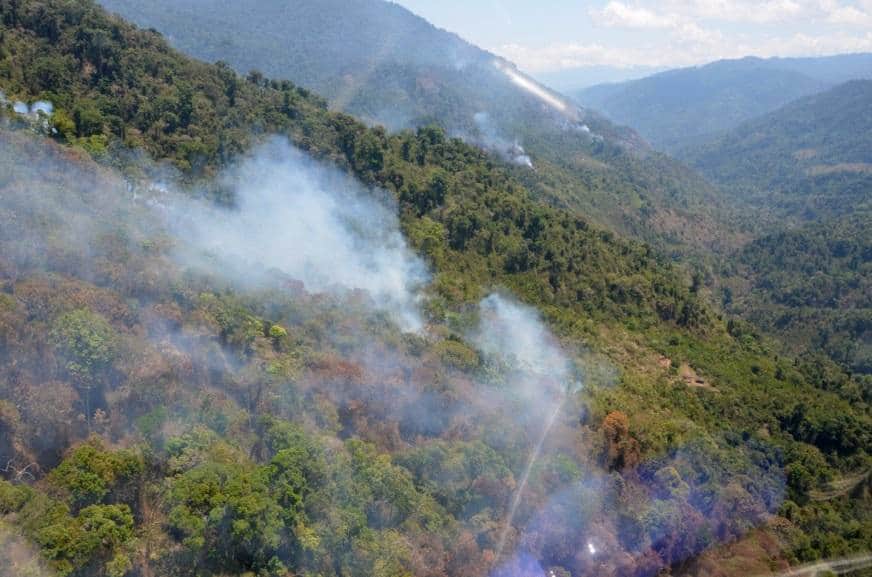Hunting has emerged as the primary culprit behind forest fires in protected areas in Costa Rica, according to the Guanacaste Conservation Area (ACG). In 2023, out of the 36 recorded fires, a staggering 16 were directly attributed to hunting and irresponsible behavior. Sergio Cascante, a seasoned forest firefighter, shared valuable insights into the tactics employed by hunters to wreak havoc on the forests.
Cascante explained that hunters identify prime hunting areas and intentionally initiate fires in nearby locations. Subsequently, they retreat from the scene, only to return after approximately fifteen days when new sprouts begin to emerge in the burned areas. These new growths act as a magnet for deer, the coveted prey of the hunters. This disturbing cycle of arson and hunting represents a criminal act that inflicts severe damage on the ecosystem.
Furthermore, authorities have uncovered cases of what they term “revenge fires.” These instances involve individuals retaliating by setting fires after their release from apprehension for illegal activities committed in protected areas. Such vengeful actions exacerbate the already critical issue of forest fires in Costa Rica.
In addition to hunting, several other factors contributed to the forest fires in 2023. These include incidents of pasture burning (7), electrical wiring issues (3), vandalism (2), fires related to agriculture (2), trash and stubble burning (2), and even a single incident caused by a discarded cigarette. In certain cases, determining the exact cause of the fire has proven to be challenging.
The fires ravaged a total of 636 hectares of land within protected areas. However, ACG officials noted that the frequency of such events remained below the 10-year average, and the total area impacted was smaller compared to the previous year. These figures offer a glimmer of hope but underscore the ongoing need for concerted efforts to combat forest fires.
Among the recorded incidents, the most significant fire took place on March 22 in Laguna Juanilama, Guanacaste National Park, where a staggering 200 hectares of land were consumed by the flames. This incident serves as a poignant reminder of the urgency to address the root causes of forest fires and implement effective strategies to safeguard Costa Rica’s invaluable natural resources.
ACG officials expressed deep concern about the potential onset of the El Niño phenomenon, forecasted to occur between July and September. El Niño could intensify global temperatures, trigger droughts, and reduce precipitation in various regions. As a result, the ACG remains vigilant, anticipating potential forest fire threats stemming from the predicted drought.
The impacts of forest fires extend beyond wildlife and ecosystems, posing significant problems for human populations as well. The ACG emphasized that apart from animals and trees, other crucial elements such as microorganisms in the soil suffer from the effects of forest fires, leading to soil degradation. Moreover, rivers bear the brunt of the aftermath as the currents wash the burned materials directly into water sources used for human consumption.
It is imperative to address the alarming prevalence of hunting-induced forest fires in Costa Rica’s protected areas. Swift action is required to combat the criminal act of arson and hunting, while also addressing other contributing factors. By prioritizing the preservation and protection of these vulnerable ecosystems, Costa Rica can secure a sustainable future for its rich natural heritage and the well-being of its communities.





